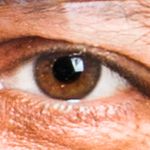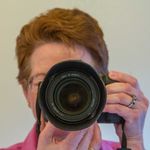 Adobe Community
Adobe Community
- Home
- Stock Contributors
- Discussions
- Re: Any know what technical issues this image has?
- Re: Any know what technical issues this image has?
Any know what technical issues this image has?
Copy link to clipboard
Copied
Can't figure why this was rejected
"Thanks for giving us the chance to consider your image. Unfortunately, during our review we found that it contains one or more technical issues, so we can't accept it into our collection."
Copy link to clipboard
Copied
The cropping of the picture is very narrow and too narrow for my taste. If this is not the reason for the rejection, then I would try noise reduction, but perhaps leave out the eye area.
Copy link to clipboard
Copied
No crop on this, it was framed deliberately tightly as a close up, it's properly exposed at ISO-400 so virtually no noise
It's sharp nd without artifacts, the eye is deliberately positioned by the rule of thirds
I just cannot figure what the flaw is? unless it's simply not to the editors taste
Copy link to clipboard
Copied
If you take deliberately a picture with such a tight framing, it still is tight. And that is a technical issue.
If you take a picture at ISO-400 and there is virtually no noise, then I see the virtual noise. I didn't say that it is strong. But apart from framing, that is what I see. I did not say that it is the refusal reason.
If the moderator dislikes the image, the refusal is “Commercial appeal”.
Copy link to clipboard
Copied
I think the editors MIGHT take the view that if someone wants a close-up they can readily crop a full head image. Tight cropping has been asserted to be a reason for rejection. (Of course, we can never actually know)
Copy link to clipboard
Copied
I'm inclined to agree although that would of course leave a client with a lower resolution image than may be required
Copy link to clipboard
Copied
Yes, I have thought that myself, but it has been a commonly quoted (possible) problem. Adobe don't seem to want photo sets, and indeed if they did many people might just meet the market by cropping their own submitted work...
Copy link to clipboard
Copied
Let's assume that the customer so that the picture fits into his or her framing, would need to crop. How would he or she do? A lower resolution to a quite high-resolution image is still usable for a billboard size print. But adding content needed is not possible. Simple.
The beak belongs completely in the picture, 2/3 rule or not.
Copy link to clipboard
Copied
Not if the subject of the image is a Swan's eye
This then comes down to preference or a lack of desire for an image of a Swan' eye, but as contributorss we take that exact risk all the time, we try to anticipate demand and submit images we think/hope will be wanted, in this case aan editor has made that decision on behalf of any ppotential clients before they ever had a chance to see it
If you think that you can see noise in this image then youneed to clean the dust off of your spectacles, I was being modest when I sid virtually no noise
Copy link to clipboard
Copied
My immediate reaction is "too bad the top of the head and tip of the beak are missing". We can debate whether too tight cropping is a technical issue or an aesthetic issue, but since the image is otherwise technically superior, I believe cropping is the reason for rejection.
Copy link to clipboard
Copied
I believe this to be the case
It's a shame as the shot was mainly of the birds eye as the subject rather then the entire head (I do have thos shots too by the way)
Thanks
Copy link to clipboard
Copied
Did your images of the entire bird's head get accepted?
Copy link to clipboard
Copied
HI @terrybrooks ,
I agree the composition is not that sound. I'd like it better cropped to include the entire beak and head. However focusing and cropping just the eye, nose or beak is also acceptable. In any case this could be viewed as featuring the eye and nose of the bird - quite acceptable. Therefore the crop is not the issue. The head is not completely in focus. At the latter section of the head (the draw of the bird) down the neck is out of focus. Also I believe the picture is too cool. Zoom to 100% to view the draw and neck and you'll see it is not sharp.
Definition:
Crop here means the areas included in the photo that you took; the framing to make the picture in the camera.
Best wishes
JG
Photographer and Nutrition Author
Copy link to clipboard
Copied
As for those who mention parts of the image being out of focus, well that is no different to any tightly framed portrait shot, it simply is not possible at those reproduction ratios to have front to back sharpness but in this case it's quite good as it's not a full frame sensor and the subject of the image (the swan's eye) is in sharp focus
Copy link to clipboard
Copied
Hi @terrybrooks ,
I believe you are missing the point. No one reviewing or buying this can know what is in your mind. they have to go from what they see. The birds jaw is in the forefront It must be in focus. The aperture can adjust to accommodate depth of field. That takes care of what is behind the plain of focus.
If you are focusing on the eye then you need to zoom in more on the eye so that you have less negative space. If you cannot focus on the eye, then make a crop that will give a better composition. As far as we are concerned, it is a badly cropped portrait of a bird's head. That is what we see.
In any case the section to the left that is selected is out of focus. That's not the neck and could be taken care of with enough depth of field. In addition as you will see in this clip, the image also displays noise-grain when zoomed in at 100%.
Best wishes
JG
Photographer and Nutrition Author
Copy link to clipboard
Copied
Hello,
In my view - although not necessarily a reason for rejection - I do think the framing is rather too tight. Adobe advises leaving room around the image so that it could include text. In your image, there is no room for text:
"General composition: Is your horizon straight? Have you cropped the image too much? Consider leaving a designer room to add their own text or objects. "
https://helpx.adobe.com/stock/contributor/help/quality-and-technical-issues.html
PS - the composition comes under technical issues in Adobe's help guide.
Considering artifacts, well this is zoomed to 100% in Photoshop.
Do you see any signs of artifacts? You can begin to see the pixels, so this image can't be enlarged too much. Limits the buyer.
It might be considered 'picky', but Adobe sometimes is!
The sensor size is probably quite small.
The focus is fine in my view.
The neck doesn't need to be in focus as the subject is the head, even though the lower part of the head is not sharp, it blends into the neck, so I think this is fine.
The image could be warmed up a tad, and just a wee bit more exposure. Small differences like this can make a big difference:
Therefore, I also personally think the framing of the image is the main issue. But we are just giving our own opinions from experience.






